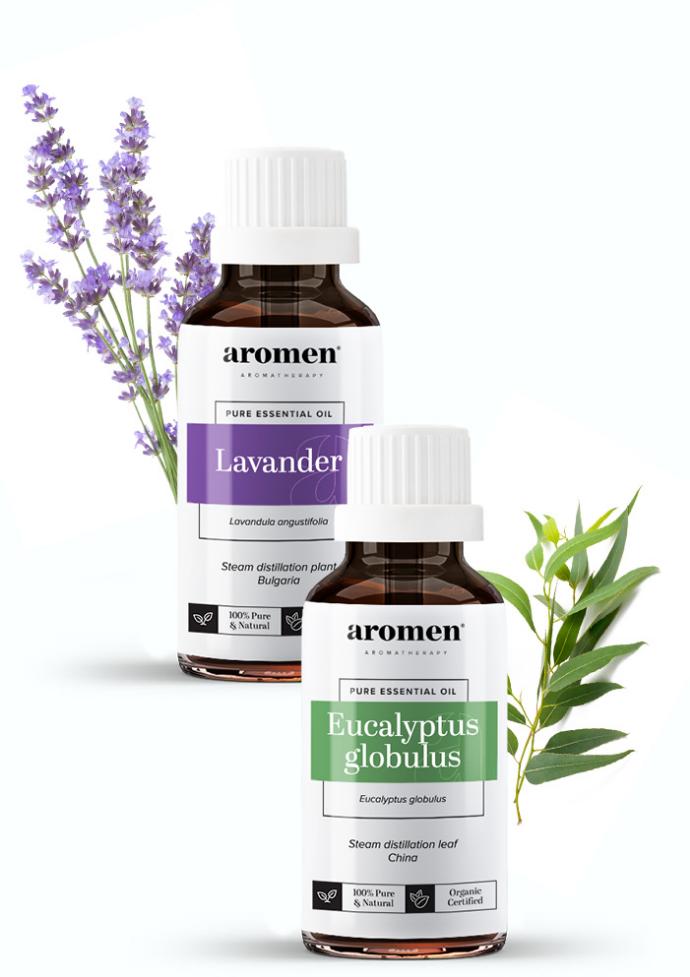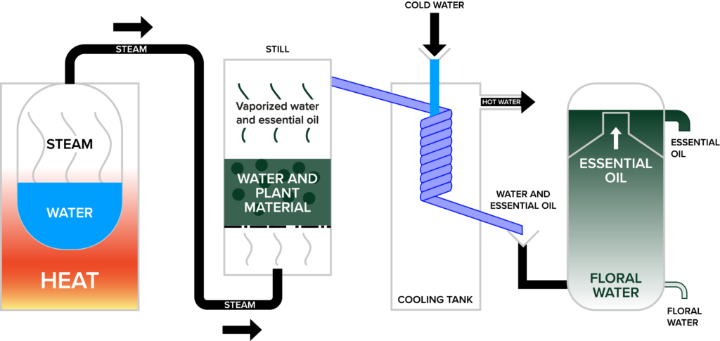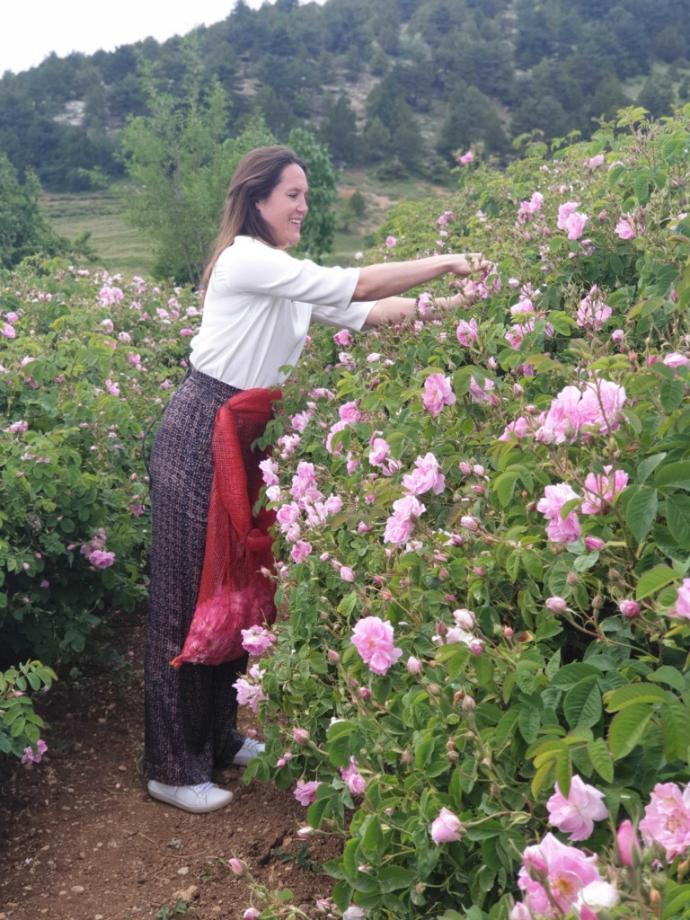The quality of essential oils in aromatherapy is of immense importance to gain the most out of its health benefits.
Pure nature in one drop.
We live in a time where everyone is becoming more aware of nature and the benefits that pure products can offer. This trend is shown by the higher demand for essential oils. Its increased demand (4) grows with the expanding supply of oils, diffusers, and natural health products, making wellness more accessible (5, 6). Now, the benefits of aromatherapy can be acquired in every home.
However, it is not always clear which oils exactly provide those health benefits. And what precisely are essential oils? In this article, we dive deeper into the process from plant to essential oil, and which ones you can best use for an optimal wellness experience.
The essence of essential oils and aromatherapy

Essential oils are basically “nature in a drop”. Namely, they are volatile, organic components of aromatic vegetable material obtained through various extraction methods. These fragrance molecules have a powerful effect on the human body and mind (3, 7).
Aromatherapy builds further on this. This form of treatment makes controlled use of plant extracts for therapeutic purposes (3, 6, 8). In addition, there is a difference between essential oils and other oils available on the market.
Extraction of essential oils
When you rub a lavender flower between your fingers, the oil on your fingertips along with the fragrance is simply put ‘an essential oil’. Essential oil can be obtained from fresh plant material (root, flower, leaf, stem, etc.) by pressing and distillation (1, 3). The most common form of extracting essential oils is through steam distillation (14).

Steam distillation is a separation method used in the Middle Ages by the Arabs to extract essential oils.
Under low pressure, by means of steam in stainless steel vessels, the volatile parts are removed from the aromatic plants. These molecules form a gas which is then converted by condensation into a liquid. The liquid that is subsequently collected has been divided into two parts (14, 15). The essential oils float on the water because they have a lower density and the remainder mixes with the water, resulting in hydrosol or floral water (13). Hydrosol is known for its moisturising and purifying qualities for the skin and is often used in masks and as facial tonics.
Quality
When creating a pure essential oil, it is important to choose fresh plant material from botanically identified plants. In addition, many countries can offer oils that are “naturally pure”, but where the constituents are not necessarily 100% pure. Sometimes certain molecules are added or removed through rectification causing the essential oil to lose its synergy. Therefore, these oils are not used in aromatherapy and do not provide hardly or any therapeutic benefits (5, 9). Fortunately, there are ways to check whether an oil is a quality essential oil. When the liquid is presented in a dark bottle with a pipette, labeled with a sticker with the Latin name and the distilled part of the plant, the oil is usually of good quality. The best test is to drip the liquid onto a piece of paper – essential oils don’t leave greasy stains (except for Sandalwood).
Unlike essential oils, synthetic fragrances are chemically recreated oils. These are only there to mimic the essential oils and therefore have no healing qualities, and can even have negative effects (9).
Yield versus price
Some essential oils are more expensive than others because they require more organic components to provide the same amount of yield. Most plant species do not yield more than 1% essential oil. This has to do with the size of the molecules, where substances with a higher molar mass give a higher gain (15).
For example, 150 kg of lavender is needed for 1 kg of essential oil, while nearly 4 tons (4,000 kg) of Damask rose petals are needed for the same amount of essential oil (11). A kilo of Damascus rose oil, therefore, costs around 5.000 €.
In addition, the very ingredients may be more difficult to obtain. Australian Sandalwood essential oil, for example, is quite costly, as the tree can only be harvested from at least 25 years of age (12), cutting down the tree in the process (2).
Health benefits
The properties and therapeutic indications depend on the chemical structure which not only varies on the material of the plant but also depends on harvest time, soil type, growing location, and other factors (8, 13). The biochemical composition of these molecules has a strengthening, softening, or neutralising effect on functions in the body (7).
For example, neurotransmitters are released with therapeutic benefits (8). Endorphins have an analgesic effect and induce feelings of happiness and euphoria. Serotonin calms and relaxes, while norepinephrine is stimulating and clears the mind. So it is that, depending on the qualities of the essential oil, you may experience different benefits (13). Wellness centers are experts in using the qualities of aromatherapy.

Concluding
Aromen strives to provide the best wellness experience through pure, high-quality essential oils. Our products are therefore ideally suited for aromatherapy. All our organic essential oils have been tested and approved by the Certisys In Belgium. In addition, our oils are distilled from botanically defined plants that have been analysed and provide us with an overview of all molecules within a range of 0.01%. This allows us to ensure excellence and honestly harvested essential oils that provide remarkable health benefits.
View our range of blends, diffusers and essential oils.
References
(1) https://www.pranarom.com/nl/wetenschappelijke-aromatherapie/distillatie-en-persing
(2) https://nl.ezyguidance.com/top-20-most-expensive-essential-oils-world
(3) Guenther, E., & Althausen, D. (1948). The essential oils (Vol. 1, p. 774). New York: Van Nostrand.
(4) Lakhan, S. E., Sheafer, H., & Tepper, D. (2016). The effectiveness of aromatherapy in reducing pain: a systematic review and meta-analysis. Pain research and treatment, 2016.
(5) Barbieri, C., & Borsotto, P. (2018). Essential oils: market and legislation. El-Shemy, H. Potential of Essential Oils, IntechOpen, 107-127.
(6) El, A. A. K. E. D. (2020). Aromatherapy as Complementary Medicine. In Essential Oils-Bioactive Compounds, New Perspectives and Applications. IntechOpen.
(7) Soto-Vásquez, M. R., & Alvarado-García, P. A. A. (2017). Aromatherapy with two essential oils from Satureja genre and mindfulness meditation to reduce anxiety in humans. Journal of traditional and complementary medicine, 7(1), 121-125.
(8) Micozzi, M. S. (2018). Plant Essential Oils and Aromatherapy. Fundamentals of Complementary, Alternative, and Integrative Medicine-E-Book, 409.
(9) Vankar, P. S. (2004). Essential oils and fragrances from natural sources. Resonance, 9(4), 30-41.
(10) Subasinghe, U., Gamage, M., & Hettiarachchi, D. S. (2013). Essential oil content and composition of Indian sandalwood (Santalum album) in Sri Lanka. Journal of Forestry Research, 24(1), 127-130.
(11) Baydar, H., Schulz, H., Krüger, H., Erbas, S., & Kineci, S. (2008). Influences of fermentation time, hydro-distillation time and fractions on essential oil composition of Damask Rose (Rosa damascena Mill.). Journal of Essential Oil Bearing Plants, 11(3), 224-232.
(12) Howes, M. J. R., Simmonds, M. S., & Kite, G. C. (2004). Evaluation of the quality of sandalwood essential oils by gas chromatography-mass spectrometry. Journal of Chromatography A, 1028(2), 307-312.
(13) Bakkali, F., Averbeck, S., Averbeck, D., & Idaomar, M. (2008). Biological effects of essential oils–a review. Food and chemical toxicology, 46(2), 446-475.
(14) Masango, P. (2005). Cleaner production of essential oils by steam distillation. Journal of Cleaner Production, 13(8), 833-839.